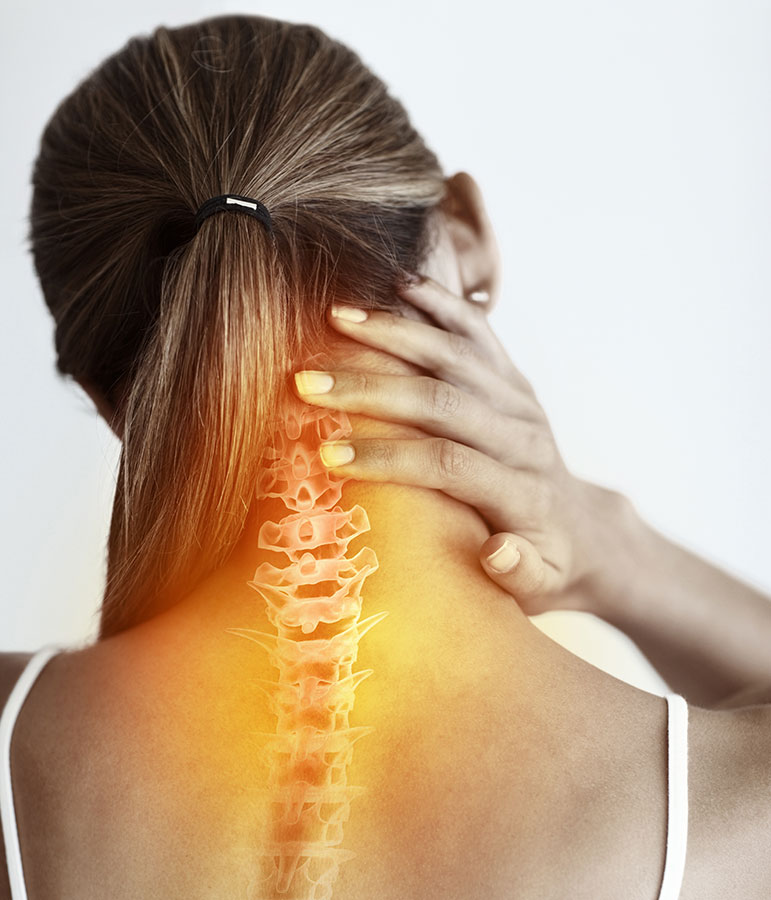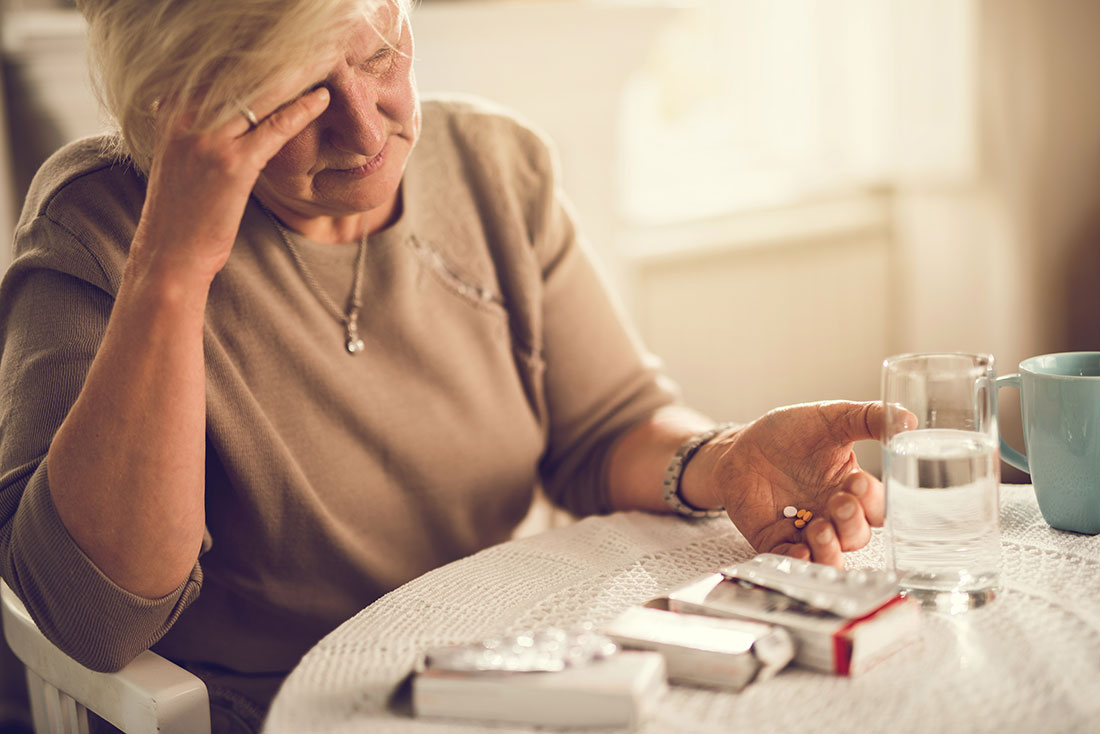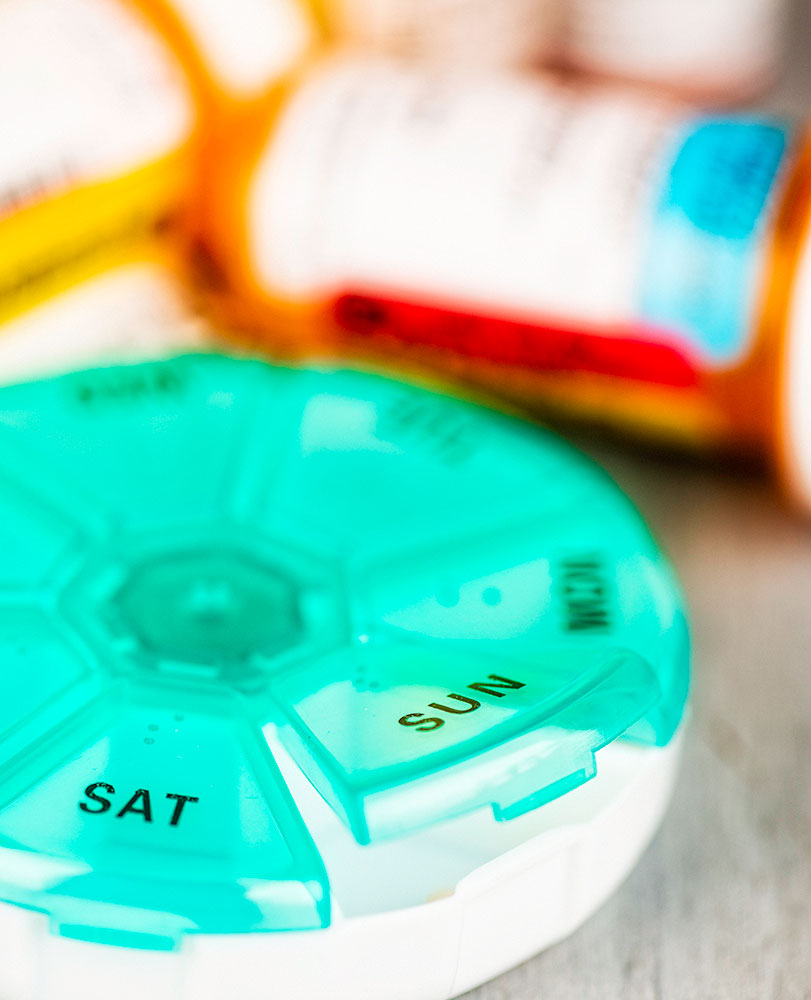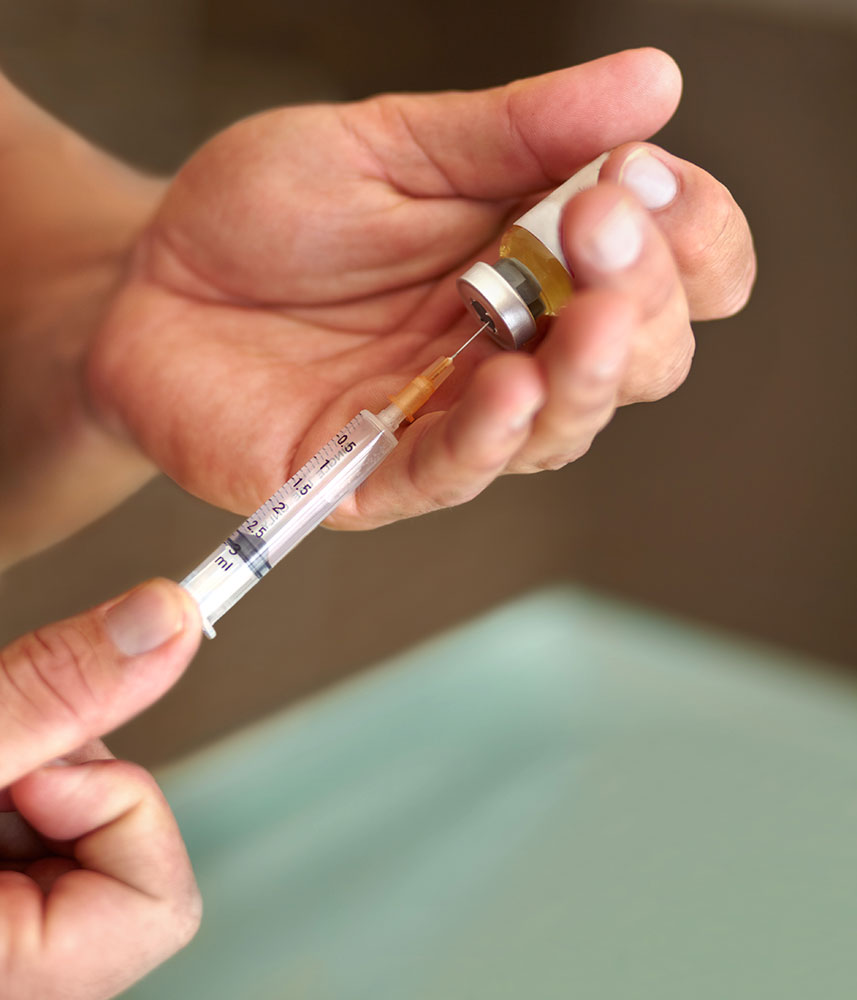Overdose Response Guide:
Awareness, Prevention, and Preparedness for Caregivers of Addicts
A caregiver’s responsibilities can cover a variety of duties, from to assisting with daily tasks to transportation to administering medical care. When your patient is a recovering addict, a caregiver must make additional considerations for well-rounded care and be prepared for anything — including an overdose. Even those who have been sober for many years can face temptation and lingering impulses, and in the case of an overdose, mere seconds can be the difference between life and death. It’s crucial that caregivers not only take active steps to keep their charge on the sober path, but that they will be able to respond to an overdose situation instantly.
This guide will help caregivers understand how to best support their patients’ addiction recovery, and give instruction on how to act in the event of an overdose. People with disabilities not only face a unique crisis when it comes to addiction in general, but there may be specific challenges stemming from their condition if an overdose occurs. A caregiver’s strongest allies will be awareness, prevention, and preparation — as well as a consultation with your charge’s physician.
Awareness: The Facts on Addiction Risks for People with Disabilities and Seniors
People with disabilities actually face a significantly higher risk for addiction than many realize. Substance abuse rates in the disability community are about 2-4 times higher than that of the general population, and it’s alarmingly high within certain sects. For instance, the rate of substance abuse lingers right around 50% for those with spinal cord injuries, traumatic brain injury, and certain forms of mental illness — whereas the general population’s rate is about 10%. Though Americans with intellectual disabilities tend to be less likely to use drugs and alcohol, studies have shown rates anywhere from 2%-26% among this demographic. The difference can stem from a lack of access to drugs and alcohol or regular monitoring by family or caregivers; regardless, some will find ways to feed their addiction in secret.
Why this increase of risk among people with disabilities? It will vary from person to person, but there are several possibilities. Substance abuse is often used as a way to handle social situations. It can ease social anxiety or offer a confidence boost in social situations where he or she might feel unsure. It might even make a person feel closer to a particular group; for example, someone in a wheelchair might not be able to join the company softball league, but he or she can grab celebratory beers after the game with colleagues.


Abusing drugs or alcohol as a coping mechanism is seen across all demographics, and has the potential to be a major factor in people with disabilities. A person may grow frustrated over challenges in finding gainful employment or schools with accessible and adaptable lesson plans. Others might feel discouraged over communication barriers among family and friends, or perhaps when it comes to dating. Often, what makes these hardships even more difficult is a lack of understanding by those around them; while family, friends, and caregivers will do their very best to empathize, the truth is a person can’t truly comprehend what it’s like from the outside. It can be incredibly isolating, and unfortunately, it can cause some to turn to substances for comfort or numbing the pain.
Though there hasn’t been extensive research on addiction in senior populations, there are several factors to consider. First, it’s important to note that in recent years, addiction has seen significant breakthroughs in understanding. For many years, alcoholism and substance abuse were seen as more of a behavioral problem that could occur in anyone — often with the underlying idea that those who indulged chose to be reckless. Modern research tells us the problem is much more individualized, with genetics and brain chemistry playing a role. Some seniors might be either unaware of the new developments or so conditioned to believe past understandings — that addiction is something people have control over — that they deny even the possibility of a problem.
Second, there’s the common misconception that a person can’t abuse prescription medication because it comes from a doctor. It’s estimated that 40% of prescription drugs sold in the United States are used by seniors, and up to 17% of prescription drug users over 60 abuse them. Some people are treating chronic pain conditions like arthritis or joint pain, and others may be treating anxiety, depression, or sleep issues. It’s also common for seniors to take multiple medications for various conditions, making it even more difficult to monitor proper dosages if they control their own intake. He or she might increase their own dosage on days they “need” to, never realizing the risk they run for addiction. Further, because of the extremely potent power of prescription opioids, even those who aren’t genetically predispositioned for addiction can fall victim.

Indeed, every individual will face unique challenges when it comes to their condition, medication, and addiction. A single factor, whether it’s a person’s specific disability or age, won’t be a lone indication of addiction. However, it’s important to keep these considerations in mind for your patient throughout your time together.
Prevention: Supporting Addiction Recovery and Limiting Opportunity for Relapse
As caregiver, it’s important that you know everything you can about your patient. Even if you’ve been working with the same person for a while now, going back through his or her history with an eye for addiction is always a good idea. You might be able to ask directly about any history of drug and alcohol use, but do be sensitive about your phrasing. Keep in mind that not everyone will see a clear link from one instance of substance abuse to another. For instance, if your senior charge used to go to the bar for drinks after work each night, he or she may not see how that could later translate to increased risk for a painkiller addiction. Be specific and thorough. If you aren’t able to get detailed answers from your charge, whether due to communication barriers or a hunch that there may be more information you’re not getting, consider reaching out to their closest loved one. Be respectful of your patient’s privacy, keep conversations completely confidential, and if he or she seems uncomfortable discussing it, let him or her know your only intention is to provide the best possible care.
You’ll also want to make sure you have detailed knowledge about your patient’s medical history, even if it’s unrelated to the condition you currently help manage. Past injuries, diagnoses, and prescribed medications can all give you valuable insight. Typically, the simplest way is to reach out to the charge’s physician, but it’s possible you already have copies or access to any medical records at home. Again, even if you’ve looked over them before, another run-through with an eye for addiction can be vital in finding red flags.
Controlling the controllables is another crucial step in addiction prevention. Maintain control of all your patient’s medications, from administering them to storing them. Keep pill organizers locked away, as well as bottles containing excess pills. They should be kept out of reach not only from your patient, but also hidden away from any nosy houseguests or burglars. In addition to limiting awareness of prescription drugs in the home and preventing theft, it can be helpful to give all parties genuine deniability: if they don’t know where the medication is, they can’t provide it to your patient should he or she ask them. You should also know exactly how many pills are in each bottle or container at any time; you might want to keep some kind of log to make it easier to track, but be sure it’s also locked away.

Ideally, there won’t be any alcohol in the house at all. However, if others live in the home and prefer to keep some on-hand for themselves, keep it out of reach and locked up. Be sure they know to return it to its rightful place immediately after serving themselves, and to never allow their loved one so much as a sip — it’s hard to say what will trigger a recovering addict, but the hope is to never find out.
Perform regular sweeps of the home to ensure there aren’t any bottles of liquor, medication stashes, drugs, or paraphernalia hidden away. Don’t limit your search to only the areas your patient can reach; if he or she has convinced a loved one to help them, it might be stored somewhere less obvious. If your charge becomes upset over this and accuses you of being distrustful, gently remind him or her that it’s your duty to keep him or her safe. You’ll also want to alert any other family members in the home that you plan to do these kinds of searches to avoid invading their privacy unintentionally.

Support will be one of your most important prevention methods, and it can look different from patient to patient. Provide or offer rides to meetings, and make sure you have contact information for his or her sponsor if they have one. Be sure your patient always has a way to reach you in case of emergency or if he or she simply needs to talk. Be an outlet and a confidante. Never pass judgment, and be prepared to offer honest insight about your own struggles — even if it’s not with addiction. It’s comforting to know others have not only faced their share of obstacles, but ultimately overcame them, and it can be a meaningful way to bond with your patient and earn his or her trust.
Finally, find out about the availability and distribution of Naloxone in your area. This life-saving drug can help your patient in the event of an opioid painkiller or heroin overdose. Many states offer programs that will provide the drug and teach people how to administer it safely. Even if your patient doesn’t have a history with heroin or opioid addiction, and even if he or she isn’t currently taking opioid painkillers, having Naloxone on-hand is perhaps the biggest instance of better-safe-than-sorry.
Emergency Situation: What to Do If Your Patient Overdoses
Discovering someone on the verge or in the midst of an overdose is both terrifying and hectic. It’s easy to become overwhelmed and freeze, but your immediate response is vital. Knowing exactly what to do ahead of time can not only prepare you, but keep you calm in the moment: if you know just what you need to do without even thinking, you’ll likely have a clearer head, and respond that much quicker.
The signs of an overdose will vary depending on which drug has been taken (and whether it was mixed with any other substance). Stimulants like cocaine will amp the body up, while depressants will slow the body down. They’re dangerous even without taking “too much,” but in an overdose, their effects will accelerate too quickly or intensely for the body to handle. Some common overdose symptoms include:
Difficulty Breathing
stimulants may cause rapid respiration, while depressants will slow or even stop it
Abnormal or No Pupil Reactions
extremely dilated or constricted and pin-like
Drowsiness, Unresponsiveness
Rapid Increase In Body Heat
Sweating
Convulsions
Nausea
Shaking, Tremors
Hallucination
Vomiting
If your patient is exhibiting any of these signs, act quickly. First, place him or her in a safe recovery position: on his or her side, head tilted upward for an open airway, with legs forming right angles. If he or she is in a wheelchair, the quickest and safest solution may be to help him or her lean forward to avoid choking on or aspirating vomit. Ensure his or her airway is clear.
Call for medical help as quickly as possible, but do not leave your patient unattended. Keep him or her calm; it may help to speak in a soothing tone, letting him or her know help will arrive soon. A person with cognitive disabilities in the midst of an overdose may be especially difficult to manage, so do what you can to prevent him or her from any extreme reactions like self-harm or ingesting more drugs. If he or she becomes violent, don’t put your own safety at risk. Allow some space, and if he or she lunges at you or threaten you, separate yourself completely until help arrives. If possible, take any drugs, alcohol, or paraphernalia with you.

If you know for sure your patient is overdosing on opioids, administer Naloxone as instructed by your training. Don’t inject it into an IV unless a professional has told you to; typically, it’s best to inject it directly into a muscle, like the upper gluteus, shoulder, or thigh. If you have a nasal applicator, be mindful while tipping the patient’s head back to avoid neck injury or accidentally causing him or her to choke.
Be prepared to administer CPR or mouth-to-mouth resuscitation. Be especially careful with chest compressions if your patient is a senior or has a condition that could make his or her bones especially brittle. Unfortunately, cracked or broken ribs occur quite commonly, so be mindful as you work.
In addition to what drug has been taken — or if you’re not sure, what you suspect was taken — let the emergency dispatcher know of your patient’s disability and any medication he or she is taking. Reiterate that information when responders arrive, but don’t impede on their care. You’ll have done your part by treating your patient in the meantime, but once the professionals arrive, you should give them plenty of space to work.
Find Treatment Today
No one wants to find themselves in an overdose situation, but the best you can do as a caregiver is prepare for the worst. Be aware of your patient’s specific risks based on his or her history, both addiction and medical. Prevent access to drugs and alcohol as well as you can, and be supportive of his or her recovery status. Keep Naloxone somewhere safe but easily accessible to you. The hope is that you will never end up needing it, but the more prepared you are for a possible patient overdose, the more likely you’ll help your patient recover from one.

